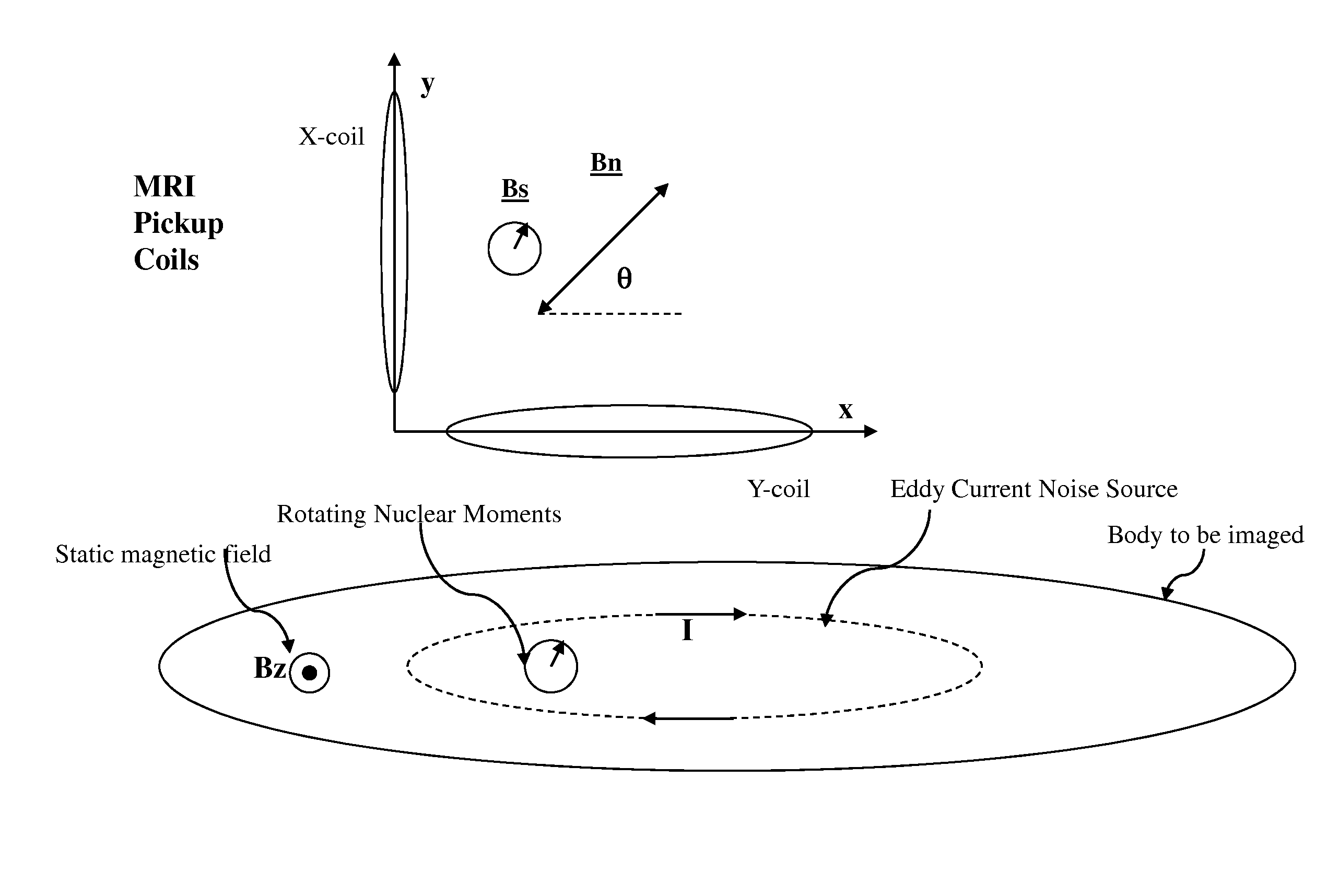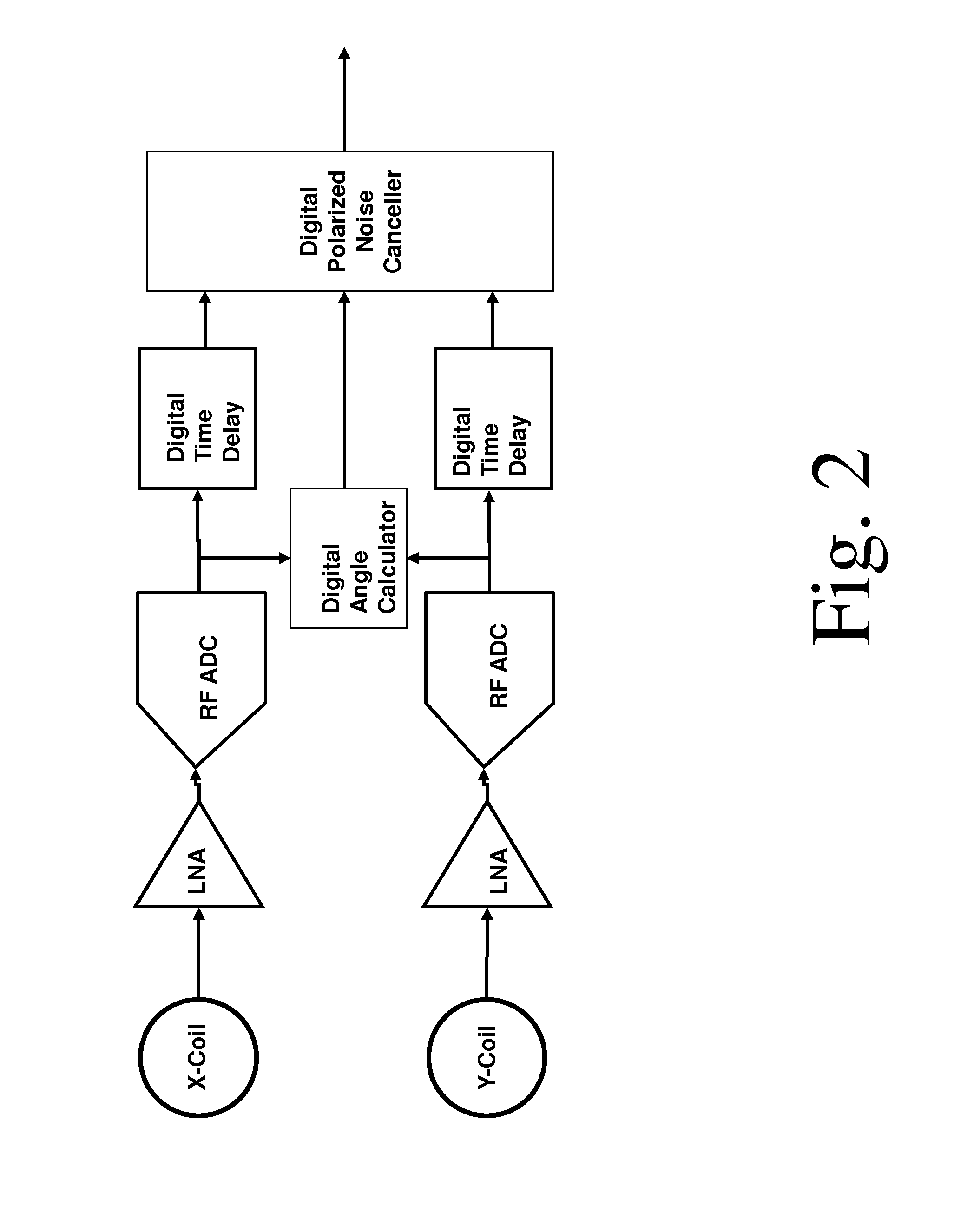System and method for noise reduction in magnetic resonance imaging
a magnetic resonance imaging and noise reduction technology, applied in the field of magnetic resonance imaging system and method for noise reduction, can solve the problems of difficult and often impossible isolation of in-band noise signals, many sources of noise, movement artifacts, etc., and achieve the effect of increasing the total noise entering the receiver, preserving the signal processing chain, and measuring more accurately
- Summary
- Abstract
- Description
- Claims
- Application Information
AI Technical Summary
Benefits of technology
Problems solved by technology
Method used
Image
Examples
Embodiment Construction
[0069]In classic MRI, as shown in FIG. 1, a large static uniform magnetic field is applied in the z-direction, in order to polarize the magnetic nuclei in the object to be imaged (usually a part of a human body) along the z-axis. An RF transmit coil applies an RF field that causes the nuclei to rotate (precess) around the z-axis, generating RF magnetic fields that rotate in the x-y plane at the Larmor frequency. Small quasi-static magnetic field gradients are applied that shift this frequency slightly, depending on position. A coil placed near the body (the y-coil in FIG. 1) measures this narrow-band signal, which is subsequently amplified and Fourier-transformed to recover the positional information. In addition to the nuclear resonance signal, broadband fluctuating eddy currents in the body also produce RF magnetic fields in the pickup coil, but for a single current dipole noise source, these noise fields are linearly polarized rather than circularly polarized as for the nuclear m...
PUM
 Login to View More
Login to View More Abstract
Description
Claims
Application Information
 Login to View More
Login to View More - R&D
- Intellectual Property
- Life Sciences
- Materials
- Tech Scout
- Unparalleled Data Quality
- Higher Quality Content
- 60% Fewer Hallucinations
Browse by: Latest US Patents, China's latest patents, Technical Efficacy Thesaurus, Application Domain, Technology Topic, Popular Technical Reports.
© 2025 PatSnap. All rights reserved.Legal|Privacy policy|Modern Slavery Act Transparency Statement|Sitemap|About US| Contact US: help@patsnap.com



